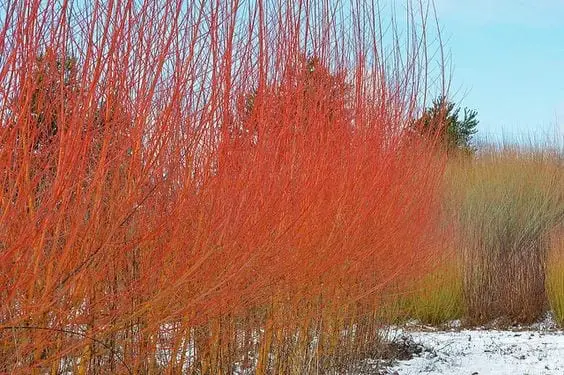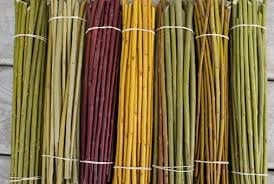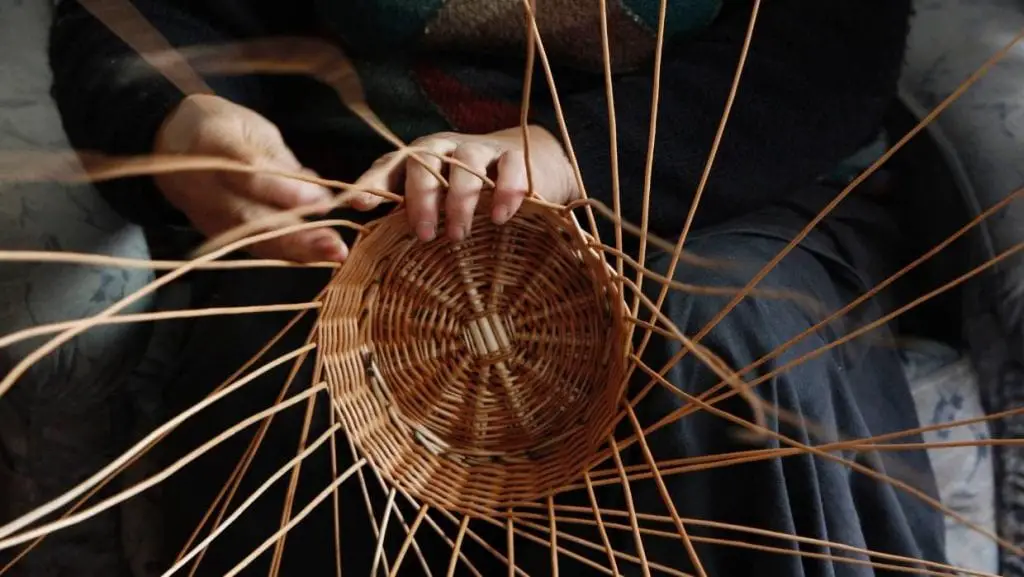
Some willow tree species have long, slim branches, which makes them the right candidate for basket making. They can produce beautifully woven baskets. There are three particular species that weavers have their eyes on. They are the common willow, almond willow, and blue arctic willow that goes with another name, which is purple osier willow.
Different Bundles of Dried Willow for Basket Making

There are different bundles of willows that you can buy from growers. The traditional size of it is composed of 1’ diameter and circumference of 3’2” or 3’ 1” around the butt end.
It changed into a smaller bundle these days. There’s no ideal size as it will depend on the supplier. Each bundle is graded into rods which are in similar height. They range from 3’ to 9’ tall. Some of them are represented by colors.
Brown Rod
The distinction of this rod is not only the color but the bark found on it.
Buff Willow
This batch is cut during the dormant season. Then they will go through the process, which is being boiled in a tank together in a bunch. Tannin is intended to seep through the rods.
A stripping machine removes the wet bark. When the rods come out, they appear with a tan color that can be dark or a buff effect.
Steamed Willow
Steamed rods stayed in steam for a few hours before being dried. They display a dark, almost black shade. It’s a great thing as it can add some more colors to your basket.
White Willow
The rods are pitted during the dormant season until the bud breaks in spring. They stand in a pit of water that is 9 foot deep. After this process, the bark can be easily peeled then the rods will be placed under the sun. It’s a way of producing willow for basket making in excellent quality, but it can’t be readily available because of the needed time.
It is traditionally used for crafting baby cribs and the washing basket. The willow won’t transfer any color to the fabric.
Sticks – buff Willow
These are the harvest from the plants that continued to grow for two years. So it developed a thicker diameter, and it stretches up to 7 to 8 feet. They can be used for handles of baskets and base parts for huge baskets.
Green Willow
It is freshly produced, but weavers prefer to use the willow with semi-green color as there’s no need for pre-soaking. They remain untouched for several weeks until the sap turns dry. Although you would see wrinkled skin, it is still fine for weaving.
Factors for Choosing the Best Willow for Basket Making

So you can buy rods for your basket weaving. But you still have work to do before getting into the proper making of the basket. Don’t feel at ease that you can directly use the rods as you still need to inspect some things.
Beginners should know the factors they need to check on the rods they will use for their baskets. They should know that it’s best to use pre-soaked and dried rods. The green ones tend to shrink, so it will distort the basket’s shape. Beginners can try starting with buff willow.
1. Size
The bundles or bolts can range from 3 feet to 9 feet long. Each bundle is sold per kilo, and you need around 70 rods to form a simple basket. You can use Pi, which is a mathematical term in determining the length of the rod for the basket that you want to make.
The formula is: circumference = Pi (3.14) x diameter. Therefore, you will need 3 feet of rods for a basket with 1’ diameter. A basket with 3’ diameter needs rods that are 9 feet long. It’s a rough estimate, but you make them a bit longer.
2. Mark, a Sign of Disease
Black marks mean that the plant where your willow came from experienced having a disease. It is a sign of weakness as the rods are prone to snapping. Let go of these rods unless you’re on the point that you have the confidence to work it out.
3. The Timing
This part applies when you harvest the willow yourself. You should know the right season, which is after the winter, period because the sap is down at that time. The rods won’t be rigid when you get them in this position. They rise during spring, so it’s the ideal time.
Preparations Needed for Best Willow Used in Basket Making
Preparations are important in attaining the best willow for basket making.
Soaking the Rods
They need to be done with dried rods. You have to soak them, so they become pliable and bendy for weaving. If the willow is to dry, it will snap for sure.
When you soak it, the bundle or bolt should be tied on both ends, and the ends of the tie should be attached to a tree or other base. You need to put weight on it so it won’t float. The soaking time depends on the willow’s type and length. You should also consider the thickness which can be identified at the butt end of the rod.
Buff willow has no bark, so you only need to soak it for a short period. Rods in three feet need an hour while the ones with a length of 9 feet require 3 hours. The brown willow demands a lot of time, and there’s a pattern for it, which is ‘afoot a day.’ It means that your 3-feet brown willow needs three days of soaking.
Mellowing
It is done after soaking. You have to place the rods in wet towels after you lifted them from the water. Stay it that way for an hour, and another hour should be allotted for mellowing.
Weaving the Summary
Aside from checking the rods, it’s also important to do well in preparations before using the willow for basket making. The best willow rods are the ones that won’t snap or break. They shouldn’t change in form too as they can’t maintain the shape of a nice woven basket.
